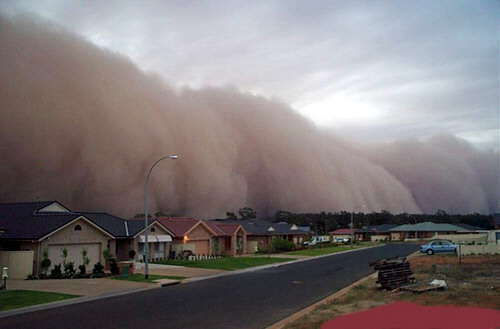When it wants to be, or when man so desires it, water --- an artistic referent to greatest degree possible --- can be literary, both within and outside of the page. With rocks in her pockets, just like a car filled with people, Virginia Woolf sunk into water of the Ouse River, leaving her ghosts to have to learn to swim all by themselves. The abbreviated existence of Percy Bysshe Shelley was even shorter in the water, spilling the dream of an unfulfilled resurrection over the scenery of ltaly's Gulf of La Spezia, where he drowned in a storm. John Berryman, tired of fighting against the current, jumped from Minneapolis's Washington Avenue Bridge (his goal was apparently to be carried away by the icy waters of the Mississippi, but his 100-foot fall was actually broken by the river bank, his lifeless body then rolling down the embankment, nearly, but not quite, reaching the water itself). Hart Crane also wanted water to end the history of his life when he leapt into the shark-infested waters of the Gulf of Mexico from the deck of ship that was transporting him from Veracruz to New York. His body was never recovered. An inscription at the family tomb in Garrettsville, Ohio, states: "Harold Hart Crane 1899-1932 LOST AT SEA."Hispanic poetry has taken up the topic of the sea. Pablo Neruda dedicated an ode to it, and it begins like this: "Here on the island / the sea / and so much sea / overflowing, / relentless." Enrique Molina, a maritime poet, wrote a fabulous poem entitled "High Tide," which features the sea as a background landscape and in which he speaks of the "crashing thunder of the waves." In his early period, Octavio Paz wrote the poem "Facing the Sea," the end of which proclaims: "The sea dies of thirst. / It twists and turns, by itself, / on its rocky coastal shelf. / It dies thirsting for air." In a poem by Vicente Aleixandre we read: "The vertical sea reveals the stone horizon." Another by Pete Gimferrer states: "The sea has its mechanical functions just as love has its symbols." I could go on. There is a wide inventory of poems that have been written about the place which is never still. From the sea, the horizontal Niagara, there also come legends. According to one, those who have survived three shipwrecks achieve immortality. Japan, after surviving so many shipwrecks, has demonstrated its immortality. It resists. It is one of those places that, come what may, will never be able to be changed overnight.
The visuality provided by the events in question gained access to a visually inaugural territory that became something more than a geographical area included in reality. An aesthetics such as had never before existed with these dimensions suddenly intervened, demonstrating that water did not need previous rehearsals, like a play does, to take the stage in a perfectly powerful fashion. The devastation was effectively convincing. It first dragged away all that it found in its path. Then, two days later, it returned to the shore thousands of bodies which it had carried off. Surely it did this so that no one could accuse it of theft. The dead that nature had killed did not enjoy good health.
Meanwhile, television continued returning images from the catastrophe to reality: it has the human eye trained for everything. Watching is a way of being complicit with the news that comes from the world on a daily basis. Due to so much insistence, sensitivity became accustomed to the whims of visuality. We are trapped in contrasts, prepared to see the end of the world from its beginnings, with the only condition that we be able to see it live. When its signs arrive, no one wants to look away, because indifference settles easily into our behavior with no one being able to notice it. Destiny holds us within itself in inexplicable ways, even on occasions when it wants to give an impossible definitive form to an overdose of water, water that, before dying, paid homage to the destruction.
Water, once again. So lively and fundamental in the paintings of German artist Caspar David Friedrich --- in which the Rhine River is more real --- and of the Englishman with the initials, J. M. W. Turner, water now wanted to switch roles, acting as if it were the main artist and not the thing being portrayed. "Everything is possible in the water," writes Pedro Salinas in the poem "Reason for Love," where he explains the reason for the liquid condition of the principal human sentiment. Sculpting waves taller than 30 feet in height with its hands (thus revealing itself as a self-taught Michelangelo), the rebellious water painted an original and surreal landscape that included in its bowels automobiles, airplanes, and trains turned into scraps of metal. But it also contained boats, vessels that need water to know they are alive, as if water wanted to show that when it so desires not even objects invented to sail are a match for it.
Few times has a country shaken by an earthquake been left as immobilized by the mobility of land and of the fierce, brutal waters. The advance of infrastructure, turned by the circumstances into underwater projectiles, was a piece of news impossible to ignore. Enormous ferries were transformed into little paper boats; rivers and streams became epic land-based seas, good only for being seen from high above, in a helicopter. The sea and the bad weather played as if they were one and the same, and both won at this game.
There were homes made of wood floating by, on their way to forgetfulness, as if asking where their home was. They had ceased to know. Even malls were mauled. The fury of the water soon lost its anonymity, making of the complete destruction an act of beatitude unfamiliar with its content. It developed its erudition by traveling all over, without the need of cooperation from its surroundings to perfect a negative prosperity, a by-no-means down-in-the-dumps fervor at the level of the unimaginable. Death had reasons to be optimistic. But, "What is this?" reality asked itself, attempting to decipher the visual roar, a karaoke in stereo originating in hell.
Entire neighborhoods were destroyed and washed away without managing to realize what was happening, like boxers of precise shape and size defeated by knockout in an amorphous ring. Their independence from any and all utilitarian ends was inconsolable. They were all victims of a recombinatorial fit of rage which nothing then in existence could prevent. In several villages, houses went floating by without knowing what to do; they had been built for a sedentary lifestyle, not to go navigating about nomadically among pieces of junk, where thousands of automobiles, after having been submerged for quite some time, were rising to the surface to see how life was as seen from the water, not from terra firma where they should have been, on the raised embankrnents of the highways.
The infancy of the enormous disaster gave notice first. In the ocean that ceased to be Pacific (its name was not enough to keep the waters calm), and which drew near to the coast of its own volition, cars, trucks, motorcycles, tractors, and bicycles burned. Houses tried to swim in an attempt to avoid becoming islands flooded by the sea, which impetuously rushed in from behind with a desire to spare no one. I remember having heard that if something needs to be said, it can only be said by inventing it. Such a thing was unnecessary on this occasion. The world on that day, and the following ones, was born invented. In seeking out their content, these images of necrological futurology, victims of inhospitable furies, took control of the humans' disadvantage in order to favor a favorite situation, one which aesthetic eagerness --- considering said situation to be non-repeatable --- could have repeated over and over to the point of weariness.
Prompting the notion of soul in nature, there were heard in the subsequent images prophecies, noises emerging from the overdose of water and wind, arousing in the mind a dowry of resources that diminish empiric reality as we know it, confirming the modus vivendi of the operation of sight. Because, in such a time in history, with nature immodestly exhibiting its cannibalistic condition, its collapsed closeness, the following remains to be asked: how to establish speech and have it tell riddles of understanding? The world was exclusively that which could be seen.
It was a disaster with an oceanfront view. The post- and posthumous-specter imposed a persistence dedicated to satisfying itself. And it fulfilled its plans in this regard. We saw and even heard the breathing of a secretive and catastrophic gesture that imposed the absolute lack of rational explanations, because there were none. In this overbearing way water showed its face. It abbreviated life as if it were a well-finished haiku. Composed of water jumbled together, ruining all in its path, the tide opened cracks and even ravines. With all that it undid in that tragic area of Asia, it made everything look new. It was a strange turning of the screw: the waves firmly swept along with them an erratic, longitudinal, and neo-expressionist collection free of cosmetic touch-ups.
---From The Milli Vanilli Condition
Eduardo Espina
©2015Arte Publico Press

